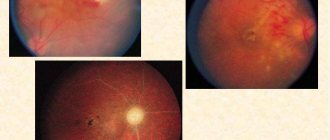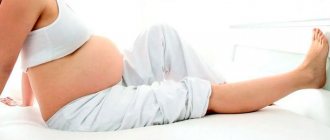General information
Addison's disease is a chronic failure of the adrenal cortex, manifested in a decrease or cessation of the secretion of hormones - mineralocorticoids and glucocorticoids ( aldosterone , cortisol , cortisone , corticosterone , deoxycorticosterone and other corticosteroids).
A deficiency of mineralocorticoid hormones leads to increased sodium excretion and decreased potassium excretion, mainly in urine, but also in sweat and saliva, while electrolyte imbalance causes severe dehydration, plasma hypertonicity, acidosis , decreased circulating blood volume, hypotension and even circulatory collapse . However, if the pathology is caused by decreased ACTH , electrolyte levels remain normal or moderately altered. Whereas a lack of glucocorticoids causes the following symptoms of Addison's disease: changes in insulin and impaired carbohydrate, protein and fat metabolism. As a result, carbohydrates necessary for life are formed from proteins, blood sugar levels decrease, glycogen deposited in the liver are depleted, which is expressed in general, muscle, and including myocardial weakness. Patients' resistance to viruses and infections, injuries and various types of stress . As failure develops, cardiac output decreases and circulatory failure occurs.
If the level of plasma cortisol is reduced, then ACTH synthesis is stimulated and the level of β-lipotropic hormone , which has melanocyte-stimulating activity, which, together with tropin, produces hyperpigmentation . People not only have bronze skin, but also mucous membranes. This means that secondary failure resulting from functional disorders of the pituitary gland does not manifest itself in the form of hyperpigmentation.
This endocrine disorder is quite rare - 4-6 people per 100 thousand in statistics from different countries. It was first described by the English physician, the father of endocrinology, Thomas Addison back in 1855 in the book “On the Constitutional and Local Consequences of Diseases of the Adrenal Cortex.”
Thomas Addison and his book
Differential diagnosis
Most often, Addison's disease is differentiated (distinguished) from the following diseases:
- secondary adrenal insufficiency caused by a decrease in the production of adrenocorticotropic hormone by the pituitary gland;
- congenital adrenal hyperplasia (a group of hereditary pathologies arising due to impaired cortisol biosynthesis);
- adrenoleukodystrophy (hereditary degenerative disease of the central nervous system, which is transmitted in an X-linked recessive manner and is associated with adrenal insufficiency);
- autoimmune polyendocrine syndrome type 2 (Schmidt syndrome, a rare autoimmune disease in which there is a sharp decrease in the function of several endocrine organs: adrenal glands, thyroid gland, parathyroid glands, gonads, pancreas);
- autoimmune polyendocrine syndrome type 1 (a rare genetic syndrome APECED, which is characterized by lesions of the skin and mucous membranes by Candida fungi, decreased function of the parathyroid glands and autoimmune insufficiency of adrenal function).
Pathogenesis
There are many mechanisms of damage to the adrenal cortex, causing insufficiency in the production of hormones - hypocorticism , or their complete absence - acorticism . These include:
- autoimmune reactions (in 85% of cases) - antibodies to the adrenal cortex are synthesized in the body - immunoglobulins M , lymphoid infiltration, fibrosis and atrophy of functioning glandular cells occur;
- infections – introduced into the adrenal glands hematogenously, most often causing caseous necrosis and calcification;
- underdevelopment ( hypoplasia );
- oncology;
- genetic defects and diseases, such as hemochromatosis ;
- injuries;
- poisoning;
- impaired sensitivity or synthesis of adrenocorticotropic hormone (ACTH) as a result of ischemia, radiation, etc.
The structure of the adrenal glands
Hormones of the adrenal cortex and their significance
Hormones produced in the morphofunctional cortical layer of the adrenal glands are corticosteroids . Among them, the most active and important are:
- Cortisol is a glucocorticoid synthesized in the zona fasciculata of the cortex. Its main function is the regulation of carbohydrate metabolism, stimulation of gluconeogenesis and participation in the development of stress reactions. The conservation of energy resources is realized through the binding of cortisol to liver receptors and other target cells, which causes activation of glucose , its storage in the form of glycogen against the background of a decrease in catabolic processes in the muscles.
- Cortisone is a glucocorticoid, second in importance after cortisol, which can stimulate the synthesis of carbohydrates and proteins, inhibit the immune system, and increase the body's resistance to stressful situations.
- Aldosterone is the main human mineralocorticoid, synthesized in the zona glomerulosa of the cortex, under its action tissues are able to retain water and chlorides, sodium reabsorption and potassium excretion are enhanced, a shift towards alkalosis occurs, blood pressure and circulating blood volumes increase.
- Corticosterone is a less significant mineralocorticoid hormone; it also has glucocorticoid activity, although half that of cortisol, which is realized primarily in stimulating liver gluconeogenesis.
- Deoxycorticosterone is a minor, low-active mineralocorticosteroid hormone that can regulate water-salt metabolism and increase the strength and endurance of striated muscles.
Damage to the nervous system
With pernicious anemia, unlike other types of anemia, damage occurs to the myeloid sheath of the nerve tracts (funicular myelosis).
It manifests itself:
- impaired sensitivity in the arms and legs, numbness;
- pain in the limbs;
- "tingling" feeling;
- increasing muscle weakness to the point of atrophy;
- unsteady gait.
If left untreated, damage to the spinal cord and its roots occurs. In this case, the pathology spreads from the legs higher. First, a violation of deep sensitivity is recorded, then hearing and smell decrease.
In severe cases, it develops:
- exhaustion,
- loss of reflexes,
- limb paralysis,
- memory loss.
Visual and auditory hallucinations and delusions are possible.
Classification
Depending on the mechanism of development of Addison's or otherwise bronze disease, the following are distinguished:
- primary insufficiency of the adrenal cortex - the basis of the pathology is damage to the glandular structures directly;
- secondary failure - as a result of a violation of the hypothalamic-pituitary system , which normally should stimulate the adrenal cortex.
Acute adrenal insufficiency is called hypoadrenal or Addison's crisis .
Features of Addisonian crisis
Addisonian crisis develops suddenly and can threaten a person’s life. Low concentrations of hormones (cortisol, aldosterone) in the bloodstream lead to loss of consciousness or psychosis, confusion, delirium, fever , severe vomiting and diarrhea , mineral and water imbalances, pain in the legs, lower back, abdomen, low blood pressure and even cause shock .
Addisonian crisis
If Addison's disease is left untreated, the levels of cortisol and aldosterone in the body will gradually decrease. This will cause progressive worsening of symptoms and will eventually lead to a situation known as Addisonian crisis.
An Addisonian crisis is when the symptoms of Addison's disease come on very quickly and very strongly. The condition may develop when the above symptoms become worse.
Addisonian crisis is a medical emergency. If left untreated, it can be fatal. If you or someone you know has Addison's disease and any of the symptoms listed below occur, call an ambulance (numbers: 103, 112).
Symptoms of Addisonian crisis:
- severe dehydration;
- severe hypotension;
- shock (when organs and tissues do not receive enough blood);
- severe vomiting and diarrhea;
- extreme muscle weakness;
- headache;
- extreme drowsiness or coma;
- death.
Causes
Addison's disease and adrenal hypofunction can develop as a result of such processes and pathologies as:
- tuberculous, syphilitic, brucellosis lesions;
- purulent inflammation;
- decreased sensitivity or ACTH deficiency;
- taking exogenous corticosteroids, which provokes adrenal atrophy;
- development of non-hormone-producing tumors;
- congenital dysfunction;
- sarcoidosis;
- amyloidosis;
- drug therapy, for example, chlodatin , etomidate , spironolactone , ketoconazole , as well as barbiturates, steroidogenesis blockers.
Treatment
How to treat Addison's syndrome? Patients with Addison's syndrome require constant use of corticosteroids. In most cases, the administration of glucocorticoids alone is sufficient for full compensation; sometimes additional prescription of mineralocorticoids is required. Hydrocortisone (cortisol) is the drug of choice and is prescribed at 30 mg per day (15-20 mg early in the morning and 5-10 mg at noon). Cortisone is usually used in a daily dose of 40-50 mg. Other synthetic glucocorticoids (prednisolone, dexamethasone, triamcinolone, etc.) are less desirable because they do not have a mineralocorticoid effect. In case of severe mineralocorticoid deficiency, additionally recommended are DOXA (5 mg once a day intramuscularly), deoxycorticosterone trimethyl acetate (1 ml of a 2.5% solution parenterally once every 2-3 weeks) or fluorohydrocortisone/cortinef (0.05-0 .1 mg per day).
Excess mineralocorticoids are fraught with edema, headache, increased blood pressure, hypokalemic alkalosis and muscle weakness. In these cases, it is necessary to discontinue mineralocorticoids and prescribe potassium chloride.
In addition, patients are recommended to take increased amounts of table salt and ascorbic acid.
Pregnancy and normal childbirth are possible in women suffering from CNN. Typically, during pregnancy, the need for mineralocorticoids decreases due to increased secretion of progesterone. However, glucocorticoid intake must be increased, and in some cases parenteral hydrocortisone is required. During labor, glucocorticoids are administered intravenously.
For infectious diseases of mild or moderate severity, the dose of glucocorticoids is doubled or tripled. If the disease occurs with vomiting, as well as when symptoms of adrenal crisis appear, intensive care of the patient in a hospital is necessary. Surgical interventions in patients with congenital insufficiency are performed under the condition of intravenous administration of hydrocortisone (100-200 mg, depending on the type of operation). In the postoperative period, loading doses of glucocorticoids are reduced quickly - 2-3 days after the elimination of the stressful situation.
Symptoms of Addison's disease
The symptoms of Addison's disease are most acute under stress, when the sympathetic-adrenal system is depleted and the body experiences an increased need for glucocorticoids. The pathology develops slowly and may not be noticed for several months or even years, while it progresses, and the patient experiences:
- chronic fatigue;
- muscle weakness;
- increased irritability, anxiety, restlessness, tension and short temper;
- depressive disorder;
- thirst and need to drink plenty of fluids;
- strong heartbeat and development of tachycardia ;
- changes in taste in favor of salty and sour;
- flushes of nausea, dysphagia (impaired swallowing), digestive system disorders - vomiting, diarrhea, abdominal pain;
- loses weight and loses appetite;
- dehydration and excessive urine production ( polyuria );
- tetany, paralysis, tremors and convulsions , especially after consuming dairy products and the phosphates that accumulate as a result;
- paresthesia and deterioration of sensitivity of the limbs;
- decreased levels of glucose in the bloodstream ( hypoglycemia );
- decrease in the amount of circulating blood ( hypovolemia ).
In addition, arterial and, quite often, orthostatic hypotension develops. In women, from the reproductive system, adrenal depletion causes disruption of the menstrual cycle; in men, erectile dysfunction .
Important! One of the most specific manifestations of the disease described by Addison is hyperpigmentation of the skin of those areas that are exposed to solar radiation or greater friction. Dark spots - melasma - appear all over the body and even on the gums, which is why the pathology is also known as bronze disease. Only 10% of patients do not have this symptom and this pathology is called “White Addison” .
Another pathology is known, described by Addison and manifested in the form of yellowness of the integument - Addison-Birmer anemia , develops with a deficiency of vitamin B12 and is also called pernicious anemia or malignant anemia .
Addison-Birmer disease: symptoms and features
The pathology is based on atrophy of the gastric mucosa and cessation of secretion of Castle factor . Most often occurs in older people and people over 40 years of age. In addition to the autoimmune mechanism, the cause may be strict vegetarianism , cancer, helminthiasis, gastrectomy and enteritis .
Symptoms of Addison-Beermer disease include burning of the tongue, sensitivity, dryness and inflammation of the mucous membranes, fatigue, dizziness, migraines , shortness of breath , increased heart rate, daytime drowsiness and nighttime insomnia . At the same time, dyspeptic disorders are added - anorexia , diarrhea . Very often, patients seek medical help with significant anemia.
Addison-Biermer anemia is treated with injections of vitamin B12 , and is also aimed at normalizing hemoglobin .
Clinical manifestations
Pernicious anemia typically develops gradually.
Initial symptoms:
- general weakness;
- dizziness;
- increased fatigue;
- tachycardia;
- shortness of breath on exertion.
The pronounced clinical picture includes:
- yellowing of the skin and sclera (lighter than with hepatitis);
- pain and inflammation of the tongue (glossitis);
- dull pain or a feeling of heaviness in the left hypochondrium due to an enlargement of the spleen (rarely the liver).
The disease has a cyclical course with periods of exacerbations and remissions. With each exacerbation the symptoms become more severe.
Picture of tongue inflammation (glossitis)
Tests and diagnostics
To confirm Addison's disease you need to do:
- ultrasound examination of the adrenal glands to identify lesions, for example in tuberculosis ;
- blood test to determine the level of adrenal hormones (cortisol), ACTH, glucose, potassium, sodium, renin ;
- CT scan of the adrenal glands, which allows you to detect adrenal infarction, reduction in size, tumor metastases, amyloidosis;
- MRI of the brain to study the hypothalamic-pituitary region and detect destructive, tumor or granulomatous processes.
The basis for diagnosing Addisonian crisis is:
- a decrease in sodium concentration in the bloodstream below 130 mmol/l, excretion in urine - less than 10 g per day;
- an increase in potassium concentration in the bloodstream over 5 mmol/l;
- a drop in the ratio of sodium to potassium ions to 20 units (normally 32);
- low glucose levels;
- development of acidosis;
- high concentrations of urea , residual nitrogen in blood plasma tests.
What additional examination is needed?
The complexity of the pathology requires the participation of different specialists in the diagnosis.
- The neurologist conducts a more complex study, which makes it possible to establish lost sensitivity in the limbs, usually on both sides, and altered motor reflexes, indicating damage to the myelin sheaths of the spinal cord.
- To exclude the possibility of a cancerous tumor, an endoscopic examination of the stomach is necessary. With atrophic gastritis, shiny areas of atrophy (pearly) are visible.
- On fluoroscopy, attention is drawn to the acceleration of evacuation and the smoothness of the folds of the mucous membrane.
- To confirm the low absorption of vitamin B12 in the stomach, a Schilling test is performed: the amount of vitamin excreted is determined after the introduction of internal factor. The ratio of decrease in blood and urine must be checked. A low result indicates a large amount of antibodies in the gastric juice.
- When analyzing gastric juice, a decrease in the concentration or complete absence of hydrochloric acid and a lot of mucus are revealed.
- Histological analysis of the mucosa after biopsy indicates thinning and loss of glandular epithelium. Pernicious anemia is characterized by a complete absence of gastromucoprotein and acid secretion. This symptom persists during the remission stage.
- The ECG shows manifestations of myocardial hypoxia; against the background of tachycardia, arrhythmias, signs of ischemia, and early cardiosclerosis are possible. With long-term remission and recovery, the ECG returns to normal.
Diet for adrenal insufficiency
Diet 15 table
- Efficacy: therapeutic effect after 2 weeks
- Timing: constantly
- Cost of food: 1600-1800 rubles per week
In addition to the fact that the patient needs to avoid hypothermia and stressful situations, a diet rich in carbohydrates is recommended. You need to add foods with a high amount of ascorbic acid (black currants, citrus fruits, rosehip decoction) and an additional 15-20 g of table salt per day to your diet.
To prevent hyperkalemia, it is better to limit the consumption of potassium-rich dried apricots, raisins, legumes, and potatoes.
Prevalence
Primary adrenal insufficiency is rare: according to domestic authors, it occurs in 1 in 4000-6000 hospitalized patients. American endocrinologists provide data on 39-60 cases of adrenal insufficiency per 1 million population. Chronic adrenal insufficiency (CAI) is more common in men; The ratio of men to women suffering from this disease is 2:1. According to German doctors - Oelkers and his colleagues - the average age at which the disease is diagnosed is 40 years (from 17 to 72).
Mode
Addison's syndrome does not allow patients to engage in heavy physical labor. Any stressful condition (infection, physical or mental stress, etc.) requires an increase in glucocorticoid intake. The principle of clinical observation in relation to these patients must be strictly observed. All patients with Addison's syndrome are provided with a special leaflet, which indicates a rational schedule for taking corticosteroids and the optimal single and daily doses of various corticosteroid drugs for a given patient. In case of an urgent situation, glucocorticoids should be ready for parenteral administration. Warning information should also be prepared for doctors in case the patient is unable to independently provide information about his illness. Patients should be aware that they should consult a doctor immediately if they experience weakness, malaise, fever, abdominal pain, diarrhea, or other signs of worsening condition. Drinking alcohol, taking barbiturate sleeping pills, and using alkaline mineral waters to wash down tablets containing corticosteroids are prohibited.
1. Balabolkin M. I. Endocrinology, 1998 2. McDermott M. Secrets of endocrinology, 2001 3. Wolfgang Oelkers M. Adrenal issuficiency. The New England Journal of Medicine, Vol. 335, no. 16, p. 1206-1212 https://www.temple.edu/imreports/Reading/Endo%20%20-Adrenal%20insuff.pdf 4. May M., Vaughn E., Carey R. Adrenocortical insufficiency - clinical aspects. In: Adrenal disorders, 1989, p. 171-189 5. Oelkers W., Diederich S., Bähr V. Recent advances in diagnosis and therapy of Addison's disease. Journal of Endocrinology Vol. 1. 1994, p. 69-80







